Hyundai Tucson vs Volvo XC40 - Differences and prices compared
Costs and Efficiency:
Price and efficiency are key factors when choosing a car – and this is often where the real differences emerge.
Hyundai Tucson has a noticeable advantage in terms of price – it starts at 30600 £, while the Volvo XC40 costs 36800 £. That’s a price difference of around 6128 £.
Fuel consumption also shows a difference: Hyundai Tucson manages with 1 L and is therefore significantly more efficient than the Volvo XC40 with 6.50 L. The difference is about 5.50 L per 100 km.
Engine and Performance:
Power, torque and acceleration say a lot about how a car feels on the road. This is where you see which model delivers more driving dynamics.
When it comes to engine power, the Hyundai Tucson has a distinct edge – offering 252 HP compared to 197 HP. That’s roughly 55 HP more horsepower.
In acceleration from 0 to 100 km/h, the Volvo XC40 is hardly perceptible quicker – completing the sprint in 7.60 s, while the Hyundai Tucson takes 7.90 s. That’s about 0.30 s faster.
In terms of top speed, the Hyundai Tucson performs slightly better – reaching 204 km/h, while the Volvo XC40 tops out at 180 km/h. The difference is around 24 km/h.
There’s also a difference in torque: Hyundai Tucson pulls clearly perceptible stronger with 379 Nm compared to 300 Nm. That’s about 79 Nm difference.
Space and Everyday Use:
Beyond pure performance, interior space and usability matter most in daily life. This is where you see which car is more practical and versatile.
Seats: offers more seating capacity – vs .
In curb weight, Hyundai Tucson is barely noticeable lighter – 1542 kg compared to 1688 kg. The difference is around 146 kg.
In terms of boot space, the Hyundai Tucson offers clearly perceptible more room – 620 L compared to 452 L. That’s a difference of about 168 L.
In maximum load capacity, the Hyundai Tucson performs evident better – up to 1799 L, which is about 471 L more than the Volvo XC40.
When it comes to payload, Hyundai Tucson minimal takes the win – 545 kg compared to 532 kg. That’s a difference of about 13 kg.
Who comes out on top?
Overall, the Hyundai Tucson shows itself to be dominates this comparison and secures the title of DriveDuel Champion.
It convinces with the more balanced overall package and proves to be the more versatile choice for everyday use.
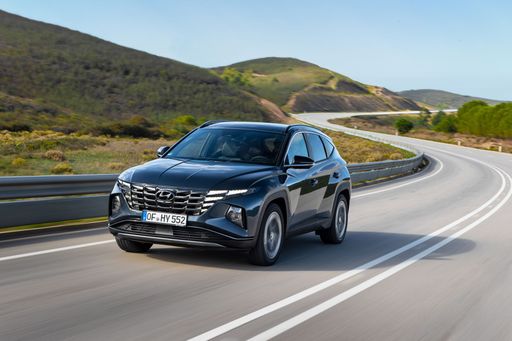 @ Hyundai Motor Company
@ Hyundai Motor Company
Hyundai Tucson
Costs and Consumption
View detailed analysis
Engine and Performance
View detailed analysis
Dimensions and Body
View detailed analysis
Hyundai Tucson
Hyundai Tucson marries bold, sculpted looks with a clever, roomy cabin that feels smarter than its price tag suggests. It's composed on the road, easy to live with day-to-day, and a sensible choice for buyers who want SUV style without the showroom theatrics.
details @ Hyundai Motor Company
@ Hyundai Motor Company
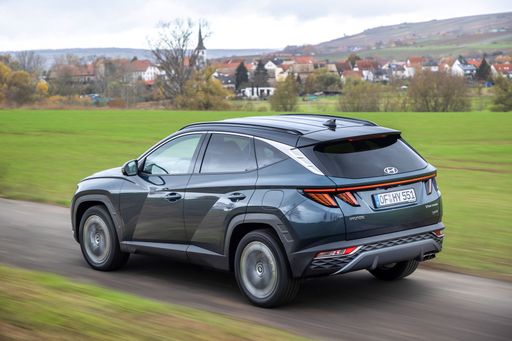 @ Hyundai Motor Company
@ Hyundai Motor Company
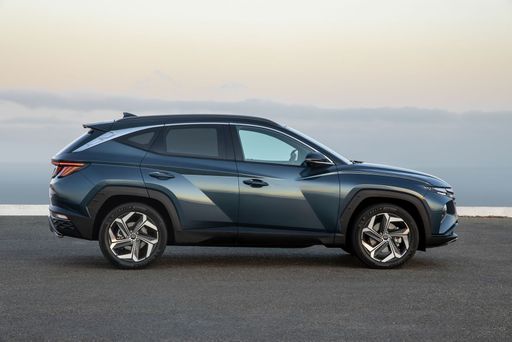 @ Hyundai Motor Company
@ Hyundai Motor Company
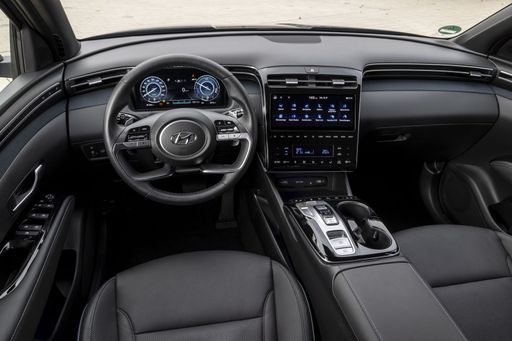 @ Hyundai Motor Company
@ Hyundai Motor Company
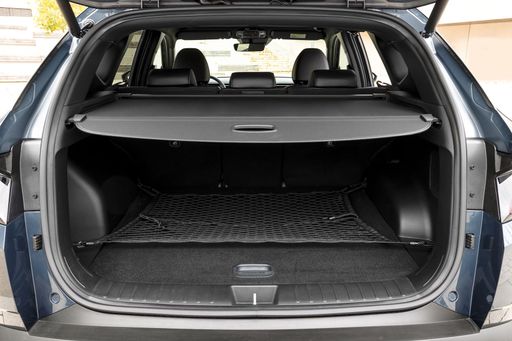 @ Hyundai Motor Company
@ Hyundai Motor Company
Volvo XC40
The Volvo XC40 wraps Scandinavian minimalism into a compact, city-ready SUV with a premium cabin that feels both practical and grown-up. It will suit buyers who prize safety, clever storage and a composed ride, proving that small dimensions don't mean small personality.
details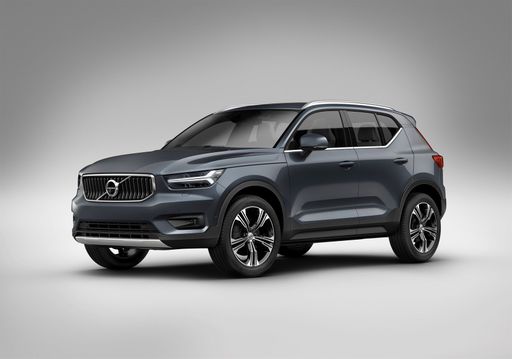 @ Volvo Cars
@ Volvo Cars
 @ Volvo Cars
@ Volvo Cars
 @ Volvo Cars
@ Volvo Cars
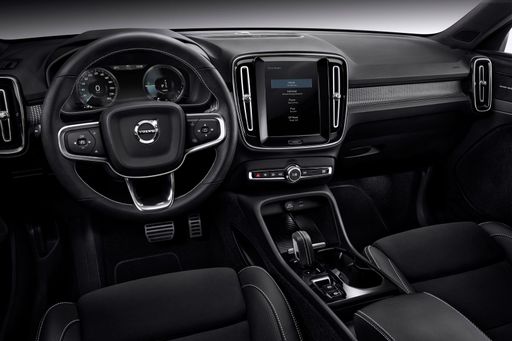 @ Volvo Cars
@ Volvo Cars
 @ Volvo Cars
@ Volvo Cars
 @ Hyundai Motor Company
@ Hyundai Motor Company
|
 @ Volvo Cars
@ Volvo Cars
|
|
|
|
Costs and Consumption |
|
|---|---|
|
Price
30600 - 46300 £
|
Price
36800 - 47200 £
|
|
Consumption L/100km
1 - 7.6 L
|
Consumption L/100km
6.50 L
|
|
Consumption kWh/100km
-
|
Consumption kWh/100km
-
|
|
Electric Range
64 - 70 km
|
Electric Range
-
|
|
Battery Capacity
-
|
Battery Capacity
-
|
|
co2
22 - 172 g/km
|
co2
147 - 148 g/km
|
|
Fuel tank capacity
42 - 54 L
|
Fuel tank capacity
54 L
|
Dimensions and Body |
|
|---|---|
|
Body Type
SUV
|
Body Type
SUV
|
|
Seats
5
|
Seats
5
|
|
Doors
5
|
Doors
5
|
|
Curb weight
1542 - 1889 kg
|
Curb weight
1688 kg
|
|
Trunk capacity
546 - 620 L
|
Trunk capacity
452 L
|
|
Length
4510 - 4535 mm
|
Length
4425 mm
|
|
Width
1865 mm
|
Width
1863 mm
|
|
Height
1650 mm
|
Height
1652 mm
|
|
Max trunk capacity
1721 - 1799 L
|
Max trunk capacity
1328 L
|
|
Payload
523 - 545 kg
|
Payload
532 kg
|
Engine and Performance |
|
|---|---|
|
Engine Type
Diesel MHEV, Plugin Hybrid, Petrol, Full Hybrid
|
Engine Type
Petrol MHEV
|
|
Transmission
Automatic, Manuel
|
Transmission
Automatic
|
|
Transmission Detail
Dual-Clutch Automatic, Automatic Gearbox, Manual Gearbox
|
Transmission Detail
Dual-Clutch Automatic
|
|
Drive Type
Front-Wheel Drive, All-Wheel Drive
|
Drive Type
Front-Wheel Drive
|
|
Power HP
136 - 252 HP
|
Power HP
163 - 197 HP
|
|
Acceleration 0-100km/h
7.9 - 11.6 s
|
Acceleration 0-100km/h
7.6 - 8.6 s
|
|
Max Speed
180 - 204 km/h
|
Max Speed
180 km/h
|
|
Torque
250 - 379 Nm
|
Torque
265 - 300 Nm
|
|
Number of Cylinders
4
|
Number of Cylinders
4
|
|
Power kW
100 - 185 kW
|
Power kW
120 - 145 kW
|
|
Engine capacity
1598 cm3
|
Engine capacity
1969 cm3
|
General |
|
|---|---|
|
Model Year
2024 - 2025
|
Model Year
2024
|
|
CO2 Efficiency Class
E, B, F, D
|
CO2 Efficiency Class
E
|
|
Brand
Hyundai
|
Brand
Volvo
|
What drive types are available for the Hyundai Tucson?
Available configurations include Front-Wheel Drive or All-Wheel Drive.
The prices and data displayed are estimates based on German list prices and may vary by country. This information is not legally binding.
